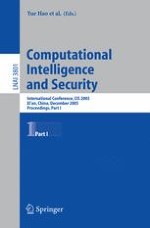2005 | Book
Computational Intelligence and Security
International Conference, CIS 2005, Xi’an, China, December 15-19, 2005, Proceedings Part I
Editors: Yue Hao, Jiming Liu, Yuping Wang, Yiu-ming Cheung, Hujun Yin, Licheng Jiao, Jianfeng Ma, Yong-Chang Jiao
Publisher: Springer Berlin Heidelberg
Book Series : Lecture Notes in Computer Science
